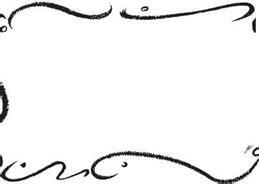The correct colors to use for highlights are important. If the highlight color is too light or too heavily applied for all media (film, TV, HD, print, and theater), your work will be seen as heavy-handed. Highlights in off – whites, cream, pinks, gold, yellows, or any color that is a few degrees lighter than the skin tone that you are working on will work best—except pure white, which in most situations is too harsh. Remember what you learned in Chapter 3—that white mixed with another color is a tint, so you can be as creative as you want to be.
Shades of darker makeup from blushers to pigments can be used depending on what type of makeup you are creating. Good colors are brownish pinks, reds, grays, oranges, and again any shade that is a few degrees darker than the skin tone you are working on. You should never use pure black to contour. Remember, if you go back to Chapter 3, you’ll see six examples of mixing color to get neutral darks, and color pigments to make browns.
Blending is the art of applying makeup using your tools to achieve a smooth, seamless finish with no visible line or hard edge. A skillful balance of strong or not-so – strong colors can be blended together without seams to create contrasts or dramatic effects.
In painting as well as in theatrical makeup, the technique of chiaroscuro is used to create a bold contrast between light and
![]()
 dark. Chiaroscuro, an Italian term literally meaning “light-dark,” originated as a term for a type of Renaissance drawing on colored paper. The artist worked from the base tone toward light and dark. It is also a term used in makeup to refer to blending from light to dark for a three-dimensional, seamless effect. It is very helpful for all applications of makeup to learn chiaroscuro. You use subtle graduations of color in light and dark shades to enhance the delineation of character for dramatic effect. Remember to blend to the end.
dark. Chiaroscuro, an Italian term literally meaning “light-dark,” originated as a term for a type of Renaissance drawing on colored paper. The artist worked from the base tone toward light and dark. It is also a term used in makeup to refer to blending from light to dark for a three-dimensional, seamless effect. It is very helpful for all applications of makeup to learn chiaroscuro. You use subtle graduations of color in light and dark shades to enhance the delineation of character for dramatic effect. Remember to blend to the end.
Any makeup can be bold as long as it is well blended.
—Gerd Mairandres, Wigmaster, San Francisco Opera
Note: Chiaroscuro is also a term used in cinematography to indicate extreme low-key lighting to create distance areas of light and darkness in film, especially black-and-white film.
